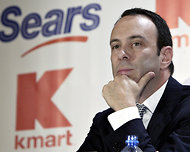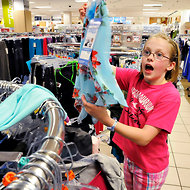Sales of new models were up across the board, from families replacing older-model sport utility vehicles to businesses buying pickup trucks and fuel-conscious consumers snapping up small cars.
The broad demand in all segments of the market is another sign that the industry’s recovery is sustainable and could improve further in the second half of the year.
The auto companies said that overall sales in the United States grew 9.2 percent during June to 1.4 million vehicles, compared with about 1.28 million in the same month a year ago, according to the Autodata Corporation.
But the bigger surprise was the closely watched seasonally adjusted annual sales rate, which came close to 16 million vehicles during the month — the highest level recorded since 2007.
Analysts said the results were an indication of an industry hitting a sweet spot in its comeback, because of a combination of pent-up consumer demand, more available credit and a plethora of new products.
“The recent surge in consumer demand is real and not going anywhere,” said Jesse Toprak, an analyst with the auto research site TrueCar.com.
All three American automakers benefited from a growing need for new pickups by companies in the housing, construction and energy industries.
“Pickup sales in particular continue to grow nearly three times the pace of overall sales,” said Joseph Spak, an analyst with RBC Capital Markets.
Yet manufacturers also reported big gains in some smaller cars, compact S.U.V.’s and hybrid gas-electric models. The strength of so many models also reflected the financial health of most of the major automakers and their ability to invest in new products and technology.
General Motors, the nation’s largest auto company, said it sold about 265,000 vehicles in June, a 6.5 percent increase from a year ago and its best month since September 2008 — just before the financial crisis began.
Most of the gains came from G.M.’s biggest brand, Chevrolet. The company said its top-selling vehicle, the Silverado pickup, had a nearly 29 percent gain.
G.M. also reported sizable increases in its Cruze compact and the new Spark minicar. And the company continued to build sales in its Cadillac luxury brand, primarily with its ATS model.
“We’re in an economy that gets a little stronger each and every month,” said Kurt McNeil, G.M.’s vice president for United States sales operations.
Ford Motor, the second-biggest American manufacturer, turned in another stellar month in June. Ford said it sold about 235,000 new vehicles in June, a 13.4 percent increase from last year’s total.
Ford said combined sales of its small cars soared 39 percent during the month, with the Fiesta subcompact posting a 104 percent increase from a year ago.
Sales of the F-Series pickup, the top-selling vehicle in America, grew about 24 percent in June, its 23rd consecutive monthly sales increase.
Chrysler, the smallest of the Detroit car companies, said it sold more than 156,000 new vehicles in June, an 8.2 percent improvement over last year.
All of Chrysler’s brands gained sales, led by the Ram pickup with a 24 percent increase, and the Jeep Grand Cherokee, which improved by 33 percent.
“The fundamentals for continued industry gains remain intact,” said Reid Bigland, head of Chrysler’s United States sales.
The large Japanese automakers all did well in June, mostly because of sales of their bread-and-butter passenger cars and small sport utility vehicles.
Toyota said it sold 195,000 new vehicles during the month, a 9.8 percent increase from a year ago. Both the Camry sedan and the Prius line of hybrid cars had double-digit gains, and sales of the revamped RAV4 S.U.V. improved nearly 36 percent.
Honda had a similar month, reporting that sales increased 9.7 percent to about 137,000 vehicles.
The third major Japanese car company, Nissan, said it had its best June sales performance in the United States. It sold 104,000 new vehicles during the month, a 12.9 percent improvement over a year ago.
The rising sales industrywide did little to bolster the German automaker Volkswagen and the South Korean company Hyundai.
Both V.W. and Hyundai have enjoyed big gains in recent times as they have added new models to their lineups. But their growth appears to have stalled in the face of intense competition.
Hyundai said it sold 65,000 vehicles during June, a 1.9 percent increase from a year ago. And V.W. reported that sales, including its Audi luxury brand, fell 0.3 percent during the month.
One unlikely segment that made big gains in June was battery-powered cars, which had been lagging the overall market.
Nissan said that sales of its all-electric Leaf rose 315 percent during the month, and G.M. reported that sales of the Volt, its plug-in hybrid, climbed 53 percent. Those gains were heavily subsidized by sales incentives and lower sticker prices intended to spur demand.

Article source: http://www.nytimes.com/2013/07/03/business/a-stronger-economy-lifts-june-auto-sales.html?partner=rss&emc=rss

